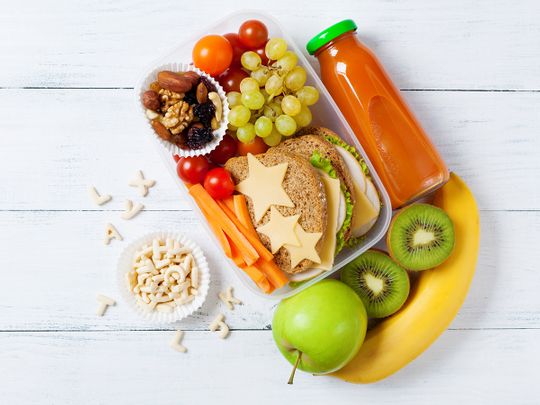
Many parents blame themselves for the way their children turn out — often unjustly so. But when it comes to health and nutrition, they play a central role in building wholesome eating habits and preventing childhood obesity via healthy meals — both at home and at school.
Here in the UAE, about 29 per cent of all schoolchildren are overweight or obese, according to official government data on child health. Over the next two years, the government wants to lower that figure to 12 per cent, in line with National Health Agenda goals. Doing so requires effort on a range of different fronts.
According to the World Health Organisation (WHO), children around the world are getting fatter as a result of their increased intake of fatty, sugary, energy-dense foods that are also low in vitamins, minerals and other micronutrients, while living less active lives thanks to the sedentary nature of newer forms of recreation, changing modes of transportation, and increasing urbanisation. But as the WHO notes, children and adolescents cannot choose the environment in which they live or the food they eat, and have a limited ability to understand the long-term consequences of their behaviour.
Dubai Health Authority (DHA) and the UAE Ministry of Health and Prevention have been running health initiatives to educate schools, caterers and parents on what constitutes a healthy lunchbox, with awareness drives at malls and hypermarkets across the country. However, parents remain the strongest line of defence, and they must step up to the plate — quite literally — by focusing on healthy meal options for their children.

Children should be eating more whole, minimally processed food and less packaged, processed food.
“It’s important to remember that your kids aren’t born with a craving for French fries and burger and an aversion to broccoli and carrots,” says Rauan Al Ashqar, Clinical Dietician, Medcare Hospital Dubai. “This conditioning happens over time as kids are exposed to more and more unhealthy food choices. However, it is possible to reprogramme your children’s food cravings, so that they crave healthier foods instead.”
But with so much conflicting information out there about what to eat, parents could be forgiven for wondering what exactly to pack into their kids’ school lunchboxes?
Balance those boxes
Dr Wafaa Ayesh, Director, Clinical Nutrition Department at DHA, says the right diet comes down to a matter of simple proportion.
“Every meal, be it breakfast, lunch or dinner, should have all five food groups in the right proportions,” she tells Better Health. “Ensure that you have incorporated fruits, vegetables, grains, protein and dairy in your child’s lunch box. A good example would be a wholegrain sandwich with grilled chicken, lettuce and cucumbers, with a side serving of fruit and a laban drink.”
For a more in-depth understanding, consider the main macronutrients — or macros in diet-speak — that comprise the foods we eat. “Carbohydrates are our bodies’ preferred source of energy, so this macronutrient should make up at least 50 per cent of our diet,” Al Ashqar explains. Look for carbohydrates in vegetables, wholegrains, beans, lentils and fruit. “Protein is mostly used in our body to build and repair muscle and tissue but has many other important functions as well. Protein should be about 30 per cent of any meal. Fats, which are used for energy, to store vitamins, produce hormones and protect our organs, should make up about 20 per cent of our kids’ lunchboxes,” she adds. Good sources of protein are lean meats, eggs, tofu and cheese, while good fats come from avocados and olive oil.
Some fats that are essential for childhood development are the omega-3 and omega-6 fatty acids, found in fish such as tuna, salmon and sardines, and in wholegrains and vegetable oils respectively.
Skip the sugar
Above all, avoid added sugars. It may be tempting to assume that children require fuel to power through their relatively higher-energy day, but research says harms a child’s metabolism. Reducing the consumption of added sugar, even without reducing calories or losing weight, has the power to reverse a cluster of chronic metabolic diseases, including high cholesterol and blood pressure, in children in as little as ten days, according to a 2015 study by American researchers. Although the sample size was small at 43 children, the results were dramatic and consistent from subject to subject.
So stop sneaking sweet sodas and biscuits into those school bags — they’re doing more harm than good.
Easy to eat
Keep school lunches relatively dry and uncomplicated, saving the curries and gravies for home meals. Whatever you pack should be fuss-free and easy to handle.
Try to resist the temptation to go the ready-made route, even though supermarkets are stocked with all kinds of convenience foods that can last longer and may appear cheaper. Processed foods are generally high in salt, added sugars, saturated fats and a wide array of other additives and preservatives.
“Children should be eating more whole, minimally processed food, and less packaged and processed food. This means food that is as close to its natural form as possible,” Al Ashqar explains.
Sure, that means a little extra effort on your part — but the rewards are more than worth it.












